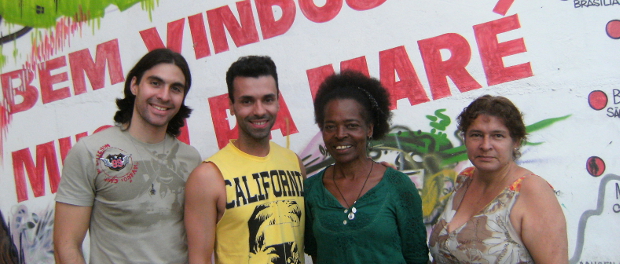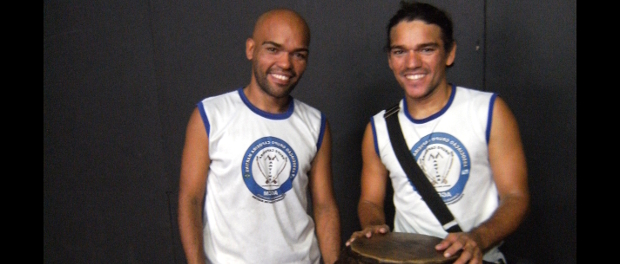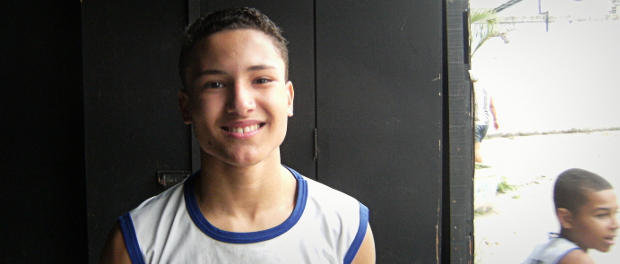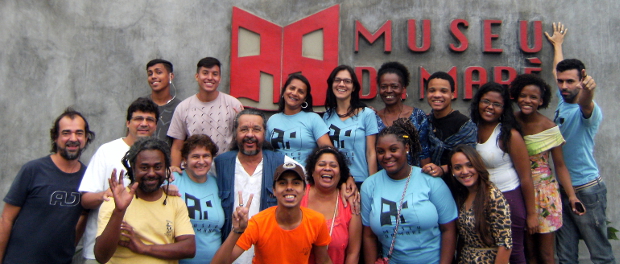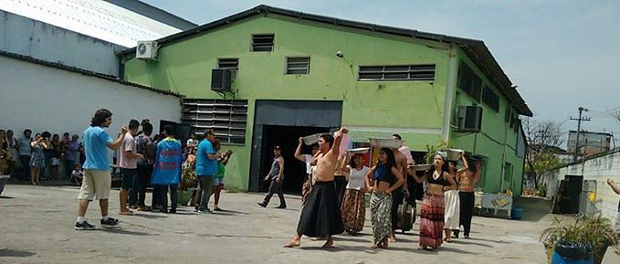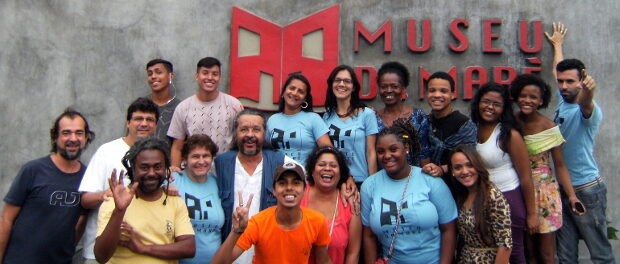
After seven years providing an acclaimed space for historic preservation, culture and art in Complexo da Maré, the Museu da Maré has been marked for eviction, with 90 days to vacate the premises. Read the first of this two-part series here.
There are four petitions to stop the eviction: three online (on Meu Rio‘s “Pressure Cooker“, Petição Pública and Avaaz.org) and one paper-based, as well as a mailing pressure group. In addition to all these actions, there will be a march from the Museu da Maré on October 18, that aims to block the nearby Avenida Brasil highway. There are also weekly Twitter events with the next one today, Thursday October 9 at 7pm, Rio de Janeiro time.
RioOnWatch visited the museum to document its importance and impact on the community. The following testimonials are from visitors, curators and collaborators of the museum.
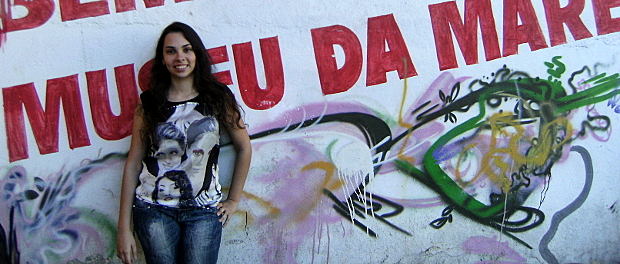
Ana Carolina Geronimo, 21, history student at the Federal University of Rio de Janeiro (UFRJ), has collaborated with the university’s program offering scholarships to initiating teachers (PIBID) and the Museu da Maré in planning activities with university students and professors:
“It’s so varied it surprised me. I don’t live here: I came with an image, and by talking with residents, ended up with a completely different one!” [The museum is important] to recount and reclaim the stories of people who actually lived in Rio de Janeiro, and really took part of its history.”
Sylan Anderson, 30, has been working at the museum for seven years. He started as a contemporary dance teacher and is currently coordinating its Cultural Workshops. Sylan expressed his disappointment in receiving such disappointing news just as the museum was revitalizing and re-occupying spaces:
“We still don’t know the actual reason why they want this place back. Personally, it gives me a feeling of uncertainty: we don’t know what will happen, but we have to keep working, because the projects cannot stop. It generates tension. And it’s a mix of tension and calmness that I need to continue resisting… The museum is the community’s home, Maré’s home. People have it as a reference for all their lives, as a preservation of memory!”
Elisabette do Espirito Santo, 52, born and raised in Maré’s Morro do Timbau, is a frequent visitor to the museum:
“I take the Zumba course here, but today I came to do some research and I’m helping with the petition, sharing it among friends, colleagues… and online! The museum is a reference, for our children, nieces and future grandchildren. This museum is not just important for the community, but for everyone.”
Alan Silva, 19, and Linique Oliveira, 17, are students from Maré’s Vila do Pinheiro. They have been awarded an 18-month scholarship to study the history of Brazil, Rio de Janeiro and favelas.
Alan: “The museum tells the stories of Maré residents up until now. So many things and projects are happening here: if they remove this, a piece of us will go away.”
Linique: “After all the hardships they’ve been through, it’s important for the youth to have these many projects here.”
Felipe Abrahão Monteiro, 26, started working as a volunteer in the museum last year and currently works in the communication department. Felipe said there has been a lack of space for dialogue and negotiations, or even explanations for the eviction:
“We guess it’s because of the real estate speculation and Pacifying Police Unit (UPP) phenomena. [The UPP] could give value to the area… This museum is not just a museum. It’s not just an exhibition. There’s a library, handicrafts, workshops, a theater group, and educational programs.”
Serji, 26, and Marcelo Naz de Lima, 27, are from the Northeast of Brazil and have lived in Morro do Timbau, one of Maré’s neighborhoods, for the last 14 years.
Serji: “It’s a hotbed of resistance, not built by one person, but by the whole of Maré.”
Marcelo: “It’s our culture, our identity, our home. They want to eradicate our culture.”
Carlos Henrique Paulo, 15, was born and raised in Morro do Timbau:
“It’s the place where we train capoeira. We can’t abandon the museum, because of capoeira and other things that would hardly take place without it… Our roda (performance) today was in support of the museum, we wanted to show how much it means to us: without it, we wouldn’t be here!”
Markito, 50, is an architect and curator. He was born in Minas Gerais State but studied in Rio and soon got involved with the creation of Museu da Maré:
“[Museu da Maré] connects with everyone: everyone that had a childhood, played in the streets, everyone who has such memories to go back to. And these origins are important and, sadly, too often born with a feeling of shame. It’s the history of the many, of the poor many that constitute the majority of Brazil. And it’s special because there’s no one else to tell that story, only us.”
Fatima, 48, is a psychologist working in Museu da Maré’s education area:
“[Museu da Maré] challenges the naturalization of poverty, showing how poorness is constructed, and how, within this group of people, there are immense capabilities.”
“This place was abandoned. It was a good deal for the owner to have us keep it in good condition. The current pacification discourses and events and militarization of favelas are noteworthy. Along with those ‘social policies’ they want to remove this place–a cultural center? The museum is a social good, there’s no owner: it’s by the favela and for the favela.”
Marcelo, 47, was born in Morro do Timbau and is an art professor and the museum’s co-founder:
“In the 1980s a team was organized to film daily lives and record stories especially from the elderly, the first generations of fishermen. Common themes and stories were repeating themselves, and after further researching in archives, discussions and debates, we ended up with the project of museum.”
“Even now I dream about what we could do next–there’s a lot of material waiting for new exhibitions!”
Isabella do Nascimento, 18, is a student from Maré’s Baixa do Sapateiro:
“It’s a place full of culture, all this history is a part of us. Besides, all the workshops and courses are precious opportunities given [to the residents]. They can’t remove the museum! It’s our history, even if we have to leave, we’ll have [the museum] with us our whole lives.”
To view full album see below, or click here to see on Flickr with captions:
Created with Admarket’s flickrSLiDR.

